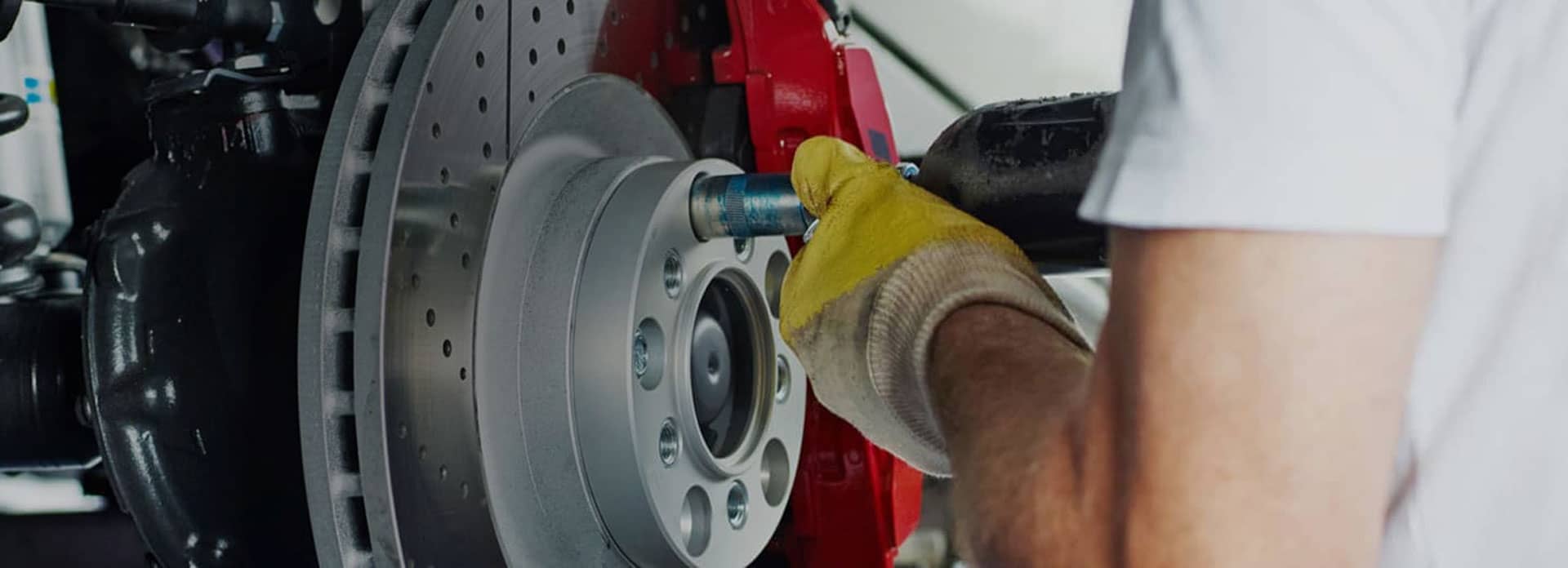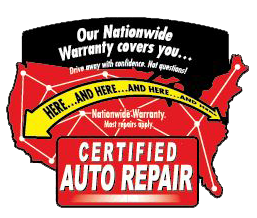
AUTONET TV
Archive for October 2024In the Hot Seat (Repair and Maintenance of Seat Heaters)Posted October 27, 2024 3:23 AMIt's chilly outside. You flip on that switch that looks like a picture of a seat with little heat waves rising from it. You expect soon you'll feel that warmth but… wait! It's not getting warmer. Oh no, what's wrong with my seat heater? There could be lots of reasons it's not working, and it could be as simple as a fuse or as major as the heating element itself. But it's something to leave to a pro to diagnose and repair. Let's say it turns out to be a blown fuse. Simply replacing the fuse may not fix it because there was a reason the fuse blew in the first place. It's possible the on-off switch has worn out or corroded. Perhaps the wiring connection isn't completing the circuit (could be corroded or full of dirt) or the voltage reaching the heating element isn't correct. There's a little sensor that keeps track of the seat heater's temperature called the thermistor. When the seat is hot enough, it will stop the juice from heating it any more. Sometimes those fail. But if all of these components are healthy, you may need a new heater element. Those seat-heating elements are made up of wires that get sat on. A lot. That can put significant strain on them. Putting something heavy on the seat can break them. Or, if you put your knees on the seat cushion as you're getting something in a rear seat, that can also damage the element. Sometimes they can be repaired but often they have to be replaced. And here is where the technician's expertise comes into play. That heater element is attached to the seat's fabric and replacing it can be tricky. It also can require disassembling a lot of the seat to access it. Seat heaters are a wonderful feature and they make your vehicle oh, so much cozier. So keep them working and enjoy the warmth! East Coast Automotive Services Making Sense of the O2 Sensor (Oxygen Sensor Replacement)Posted October 20, 2024 3:21 AMAs you know, today’s vehicles rely on a lot of computers in them to keep them running clean and efficiently. Those computers depend on information delivered by several sensors throughout the engine and exhaust system. And one of the most important is the oxygen sensor. Known as the O2 sensor for short, it looks for too much unburned oxygen that has made it into the exhaust. That signals something isn’t right with the engine’s air-fuel mixture. The sensor sends signals to the engine’s computers, which can then make adjustments to make sure the engine is running as it was designed to. Some vehicles can have several O2 sensors, and since they can measure oxygen at various points in the combustion/exhaust process, the computers can pinpoint where the problems lie. For example, an O2 sensor can detect how much oxygen is coming out of the engine’s combustion chamber, and another one can measure oxygen coming out of the catalytic converter. As you can see, it’s important that those O2 sensors are working correctly. If they’re not, the computer is getting bad information. Garbage in, garbage out. That can result in lousy fuel economy and excess pollution coming out of your tailpipe. It can also affect your vehicle’s performance. Sometimes your Check Engine light will illuminate when one of your O2 sensors goes bad. Or you may notice your engine misfiring or idling roughly. If you notice any of these symptoms, bring your vehicle on in, and a technician will pinpoint the trouble spot. East Coast Automotive Services The Edible EnginePosted October 13, 2024 3:30 AMYou may have had a friend whose vehicle was the victim of hungry rodents. After all, mice, rats and squirrels—even rabbits—have been known to gnaw on wires in engine compartments, causing vehicle electrical systems to go haywire. They can disable a vehicle completely and be very expensive to fix. In 2017, some drivers noticed their vehicle's wiring was being chewed and found out the automaker was using a relatively new material for covering their wires: soy. Many of the repairs to their new vehicles weren't covered under warranty by the manufacturer when it was discovered rodents were eating the wiring. So the owners filed a class action suit, saying the soy covering was essentially baiting the critters. The automakers tell a different story, saying mice, rats and squirrels have been chewing through wire insulation long before it was made out of soy. Regardless of what the insulation is made of, vehicle owners should make sure rodents aren't chowing down and creating a problem in the engine compartment. They can have their repair facility check for these signs: Little bits of acorns, leaves, chewed up plastic and animal droppings in the engine's nooks and crannies. Using a black light, your technician can detect animal urine, a sure sign that they've been using your engine compartment as a warm apartment, a nest and a dining room. You can take steps to prevent rodents from chomping your vehicle's parts. Honda—one of the vehicle manufacturers that uses soy-based wiring covering—makes a rodent tape. It contains a spice called capsaicin that rodents find too hot to handle. Other preventative measures include installing metal mesh around wiring harnesses or spraying the engine compartment with special rodent-repellants. Rodent damage can cost one vehicle owner thousands of dollars to fix, not the kind of bite anyone wants taken out of their bank account. East Coast Automotive Services
134 Fern St
Jupiter, FL 33458
(561) 743-1178
Straight Ahead (Wheel Alignment)Posted October 6, 2024 3:19 AMIf every road was straight and smooth, we wouldn't have to worry much about wheel alignment. But they're not, so we do. Hitting potholes or driving on rough pavement can knock your vehicle out of alignment and you'll notice it in one of several ways. Your steering wheel may not be centered when you're driving straight ahead, or your vehicle may pull to one side. You may find your tires wearing on one side or they may squeal. All are signs that could point to you needing an alignment. Your wheels should be perpendicular to the road and parallel with each other. If not, your tires will wear out faster and your vehicle won't go straight on a level straightaway. In alignment, there are several factors that must be checked. One is camber. Your wheels should be straight up and down if you look at them from the front. If not, you'll wear your tires unevenly on one side. Another factor is caster, the angle of the steering pivot. Most vehicles have what's called positive caster, when the top of the steering pivot leans toward the rear. Proper caster balances steering effort, stability on the highway and cornering. You may have heard the term "toe" in reference to your wheels. If you looked at your front wheels from straight above, for example, imagine your wheels were your feet. If you were to turn your toes in toward each other, that would be toeing in. The toe of your vehicle should be set to manufacturer's specifications so your vehicle handles well and doesn't prematurely wear out tires. It's a good idea to have your alignment checked periodically since it can get knocked out by one hard knock or a lot of little knocks. It's not just about tire wear, it's about ride comfort and safe handling. You may say a vehicle aligned just feels divine.
| ||
SearchArchiveSeptember 2020 (17)October 2020 (4) November 2020 (5) December 2020 (4) January 2021 (6) February 2021 (4) March 2021 (4) April 2021 (4) May 2021 (5) June 2021 (4) July 2021 (4) August 2021 (5) September 2021 (4) October 2021 (5) November 2021 (4) December 2021 (4) January 2022 (6) February 2022 (4) March 2022 (4) April 2022 (4) May 2022 (5) June 2022 (4) July 2022 (5) August 2022 (4) September 2022 (4) October 2022 (5) November 2022 (4) December 2022 (4) January 2023 (5) February 2023 (4) March 2023 (4) April 2023 (5) May 2023 (4) June 2023 (4) July 2023 (5) August 2023 (4) September 2023 (4) October 2023 (5) November 2023 (4) December 2023 (5) January 2024 (5) February 2024 (4) March 2024 (5) April 2024 (4) May 2024 (4) June 2024 (5) July 2024 (4) August 2024 (4) September 2024 (5) October 2024 (4) November 2024 (3) | CategoriesShocks & Struts (2)Oil Change (4)Steering (3)What Customers Should Know (30)Maintenance (4)Fuel Saving Tip: Slow Down (2)Fuel Economy (5)Winter Prep (2)Cooling System (4)Timing Belt (1)Brakes (9)Transmission (1)Inspection (2)Tire Rotation and Balancing (1)Exhaust (5)Tires (4)Auto Safety (4)Alternator (5)Tires and Wheels (2)TPMS (3)Older Vehicles (1)Battery (3)Automotive News (1)Fuel System (1)Safety (1)Fluids (2)Keys to a long lasting vehicle (2)Water Pump (1)Wheel Bearings (1)Air Conditioning (3)Fuel Pump (1)Drive Train (1)Shocks and Struts (2)Service Intervals (1)Alignment (1) | |

OUR REVIEWS


George Catuogno, 11/14/2024It’s great to have found a local auto repair shop to bring my vehicles to, whatever the need. The people running this operation have integrity and are very competent. Service costs are very reasonable. I highly recommend them.





